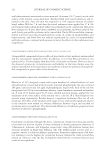INTERPRETATION OF HALAL COSMETICS IN MALAYSIA 151 No Ingredients Function Source of origin Safety aspect (CIR) 14 Glyceryl stearate Emulsifi ers, moisturizers May be derived from glycerine and stearic acid of unspecifi ed animal origin. Safe to be used in cosmetics and personal care products. 15 Vitamin A/ Retinyl palmitate Moisturizers May be derived from animal fats. Halal if it is from fi sh liver oil and plants (contain beta-carotene). Safe for use in cosmetic products. 16 Cetyl alcohol Thickeners May be derived from palmitic acid of unspecifi ed animal origin, Safe for use as cosmetic ingredients. 17 Glycerin/ glycerol Solvents May be porcine-derived. Safe for use in cosmetic products. 18 Ethanol Solvents, preservatives May be from plant natural aerobic fermentation or synthetic ethanol. Safe as a cosmetic ingredient in the present practices of use and concentration that is generally 1%. 19 Propylene glycol Solvents May be derived from glycerol of unspecifi ed animal origin. Safe for use in cosmetic products when formulated to be nonirritating to the skin. Table IV Continued In the halal certifi cation application and process, the complete documentation on the ori- gin of ingredients and the overall cosmetic production process are the vital aspects that should be complied by manufacturers (16,19). Besides that, it is important to highlight the aspect of cosmetic safety to be in line with the raw materials or sources of ingredients. For the global well-being, it is recommended that manufacturers ponder on the long-term effect of ingredients by studying the halal guidelines before manufacturing and selling the cosmetic products. Figure 1 describes the process of halal status determination. There is a need to highlight the impact of ingredients to consumers and environment to maintain the quality of halal cosmetics. In certain cases, the safe ingredients may not be halal because they may originate from prohibited animals such as collagen, glycerine, allantoin, or hyaluronan (29). However, if it is originated from the synthetic process, it is considered halal. This issue can lead to the next question whether it is safe for consumption besides determin- ing the health risk for long-term and short-term application. Ethics is considered important to manufacturers to ensure the compliance and maintain the halal integrity and quality. Eth- ics help to produce tayyib or wholesome products rather than relying only on halal aspect. In short, manufacturers need to understand the parameters of halal and haram and the components of halal–tayyib in producing halal product, particularly halal cosmetics. The understanding can help in the selection of ingredients and the halal status determination of ingredients used in cosmetic products. Halal is an ingredient that fulfi lls the specifi ca- tions of Shariah law or the subject. Tayyib is all the aspects related to processing, safety, ethics, and responsibility or a process that leads to clean and pure items as a result of generating the sense of comfort. CONCLUSION Halal is not a privileged product that is produced only for Muslims but for all consumers around the world. The main objective of halal specifi cations is to protect the consumers’
JOURNAL OF COSMETIC SCIENCE 152 well-being through producing high-quality products. The western world’s cosmetic industry also has developed guidelines and consensus and regulatory statements meant to protect consumers against harmful products. Some of these guidelines dif- fer from halal principles, some do agree with halal principles, and some are even more strict than halal guidelines. Understanding the basic principles and critical points of halal can help manufacturers and others to better understand the philoso- phy, process, and practical aspect of halal cosmetics, thus making it as a guideline in producing halal cosmetics. Halal cosmetic is also sustainable because it combines the ingredients of products and their impacts, and the ethics and responsibility of the producer. Figu r e 1. Practical steps in halal status determination of cosmetic products.
Purchased for the exclusive use of nofirst nolast (unknown) From: SCC Media Library & Resource Center (library.scconline.org)

























































































































